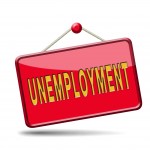
Widgetized Section
Go to Admin » Appearance » Widgets » and move Gabfire Widget: Social into that MastheadOverlay zone
Hiring Expected To Remain Steady Q2 2014
Hiring is expected to remain steady across most industries says CareerBuilder
 While overall hiring is expected to remain on a steady course in the U.S. some industries, like manufacturing, are predicted to beat the national average for hiring according to a March 2014 CareerBuilder report. Based on a survey by Harris Poll conducted on behalf of CareerBuilder, the report notes that 26 percent of employers plan to add full-time, permanent employees in the second quarter of 2014.
While overall hiring is expected to remain on a steady course in the U.S. some industries, like manufacturing, are predicted to beat the national average for hiring according to a March 2014 CareerBuilder report. Based on a survey by Harris Poll conducted on behalf of CareerBuilder, the report notes that 26 percent of employers plan to add full-time, permanent employees in the second quarter of 2014.
The top five industries that are expected to outpace the national average when it comes to adding full-time, permanent staff in the second quarter are:
- Information Technology
- Financial Services
- Manufacturing
- Health Care
- Professional and Business Services
“While employment has not yet reached an ideal level, the U.S. is moving closer to the tipping point for substantial job growth,” said Matt Ferguson, CEO of CareerBuilder ”The economy is expanding, the housing market is recovering, consumer confidence is up and companies are starting to tap into cash reserves to invest – these are all good signs. As these trends strengthen, we expect hiring to hold steady in the second quarter and gain ground in the back half of the year.”
The CareerBuilder report also notes that temporary hiring is on the rise. Thirty-three percent of employers plan to hire temporary or contract workers in the second quarter, up from 32 percent in 2013, while 26 percent say they are planning to transition some temporary and contract help into permanent staff.
Larger companies are expected to add more employees than small businesses. In response to the survey 32 percent of companies with more than 500 employees say they plan to hire full-time, permanent staff, compared to 18 percent of companies with fewer than 50 employees. Expected hiring for companies with 250 or fewer employees and those with 500 or fewer employees, came in at 22 percent and 23 percent, respectively.
*This survey was conducted online within the U.S. by Harris Poll on behalf of CareerBuilder among 2,138 hiring managers and human resource professionals ages 18 and over (employed full-time, not self-employed, non-government) between February 10 and March 4, 2014 (percentages for some questions are based on a subset, based on their responses to certain questions). With a pure probability sample of 2,138, one could say with a 95 percent probability that the overall results have a sampling error of +/- 2.12 percentage points. Sampling error for data from sub-samples is higher and varies.
For more details on the survey visit CareerBuilder.







You must be logged in to post a comment Login